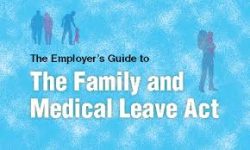05.09.16
Workplace Whirlwind
HR Bulletin
Workplace Whirlwind: Minimum Wage Increase and Paid Family Leave Changes
The employment landscape is rapidly changing! Sierra HR Partners is here to ensure you stay informed. This newsletter includes a few recent legislative developments that may impact your workforce.
CA Minimum Wage Increase

Starting in January 2017 California’s minimum wage will begin increasing to $15/hr. by 2022 as reflected in the following table. Employers with 25 or fewer employees will have one additional year to reach the $15/hr. mark with increases beginning January 2018. You should also note that an increase in minimum wage translates to a new minimum salary requirement for exempt status.
|
Increase Date
|
New Rate |
New Salary Threshold
|
| January 1, 2017 |
$10.50 |
$43,680 |
| January 1, 2018 |
$11.00 |
$45,760 |
| January 1, 2019 |
$12.00 |
$49,920 |
| January 1, 2020 |
$13.00 |
$54,080 |
| January 1, 2021 |
$14.00 |
$58,240 |
| January 1, 2022 |
$15.00 |
$62,400 |
Paid Family Leave Changes
Effective January 2017 employees will no longer need to serve a seven-day, non-payable waiting period before receiving partial wage replacement benefits. Plus, the wage replacement rate will increase from current 55% to up to 70% dependent upon earnings.
Paid Family Leave is part of California’s temporary disability insurance program administered by EDD. It provides employees with up to six weeks of partial wage replacement benefits when on an approved leave of absence to bond with a new child or to care for a family member with a serious medical condition.
Updated Policy Prohibiting Unlawful Discrimination and Harassment
As a follow-up to last month’s newsletter discussing the significant changes to California’s Fair Employment and Housing Act (FEHA) regulations on 4/1, Sierra HR Partners now has an updated standalone policy for your use. Contact one of our consultants for details.
Did you know?
The Department of Labor (DOL) recently published its first FMLA guide for employers. This publication follows an employee guide published a few years ago that is quite informative. According to the DOL the employer guide “provides essential information about the FMLA, including information about employers’ obligations under the law and the options available to employers in administering leave under the FMLA.”

The Family and Medical Leave Act (FMLA) is a federal law that provides eligible employees of covered employers with unpaid, job-protected leave for specified family and medical reasons. Please note that if your employee’s leave also runs concurrently with CFRA (California’s medical leave) then you will need to also reference those state-specific regulations.
Sierra HR Partners is available to answer your questions on regulatory leaves of absences.
03.15.16
Protecting Employee Data
HR Bulletin
Protecting Employee Data

As an employer, are you taking the necessary steps to keep your employee information confidential and secure? In today’s information age, data breaches are a too common occurrence and lead to a multitude of problems. The rise in identify theft has led to laws imposing restrictions on the use and disclosure of employee social security numbers, and company obligations for responding to security breaches of electronically stored information such as payroll records and personally identifiable information.
California civil code defines personal information as:
(A) An individual’s first name or first initial and his or her last name in combination with any one or more of the following data elements, when either the name or the data elements are not encrypted or redacted:
(i) Social security number.
(ii) Driver’s license number or California identification card number.
(iii) Account number, credit or debit card number, in combination with any required security code, access code, or password that would permit access to an individual’s financial account.
(iv) Medical information.
(v) Health insurance information.

________________________________________
The law requires businesses to promptly notify affected individuals of a security breach in the most expedient time possible and without unreasonable delay. The written notification should include at a minimum: 1) what happened, 2) information involved, 3) what action you are taking, and, 4) what the employee can do. You may contact your legal counsel or refer to the civil code for additional information.
A few recommended steps to safeguard employee data:
• Partner with your trusted IT provider
• Consult with legal counsel or Sierra HR Partners on best practices for collecting, storing and retaining employee data
• Restrict access to employee records
If one of your employees is a victim of identify theft, encourage him or her to file a police report, and to contact all creditors and reporting agencies.
DID YOU KNOW?
California’s Department of Fair Employment and Housing has a few amendments that impact employee notifications? One recent update is guidance on Transgender Rights in The Workplace. We will keep you apprised of additional updated notices as they are published.Click here for a full list of DFEH notices and brochures.
02.23.16
Dealing with Workplace Violence
HR Bulletin
What would you do if a client started to threaten one of your coworkers? Or if you were asked to terminate an employee who has a history of aggressive outbursts? Or if you were worried about an employee working alone late at night in a ‘bad’ part of town?
While there is no legal requirement to have a workplace violence prevention program, assessing the potential for workplace violence is an essential part of the requirement to “furnish employment and a place of employment that is safe and healthful for the employees therein” (Cal. Labor Code § 6400). Assessing your unique risks is also one of the best ways to prevent and, in worse cases, respond to, instances of workplace violence.
Cal/OSHA suggests that there are three main types of workplace violence:
- Type I: The perpetrator has no legitimate business relationship to the workplace and usually enters the affected workplace to commit a robbery or other crime. Businesses where employees have face-to-face contact with clients or customers, work late at night, or work alone are at a higher risk of this type of workplace violence.
- Type II: The perpetrator is the recipient of a service provided by the affected workplace or victim. The assailant could be a current or former client, patient, customer, or passenger. This type of violence often impacts health care or social service providers, teachers, sales personnel, or other professionals.
- Type III: The perpetrator has some employment-related involvement with the affected workplace. This type of violence is committed by a current or former employee or by an employee’s spouse or lover, relative, friend, or some other person who has a dispute with an employee. This type of workplace violence is far less common than Type I or Type II violence.
How you ultimately prevent workplace violence will depend on which risk factors you face, but one of the best practices employers can take is to establish a zero-tolerance policy towards workplace violence that covers not only employees, but clients, vendors, and any other visitors to your workplace. If you haven’t done so, your next step should be to conduct an initial assessment to identify factors that contribute to your risk for workplace violence, and make plans to mitigate those risks and respond to potential threats.
Sierra HR Partners is available to provide workplace violence prevention training. We can also assist you in assessing your risk of workplace violence and taking steps to mitigate it.
01.30.16
When Are My New Employees Officially On the Clock?
HR Bulletin

In an effort to make a new employee’s first day of work as productive as possible, many companies schedule an earlier date for New Hire Orientation (NHO) or onboarding activities such as completing tax forms, reviewing the employee handbook, and covering general training topics. However, problems arise when employers do not consider NHO to be work, and do not pay the new employee properly for the time.
You may be thinking, “The person hasn’t even started work yet. Why should we be expected to pay wages?”
The Fair Labor Standards Act states that when an individual is “suffered or permitted to work,” the time must be paid.
You may still be thinking, “How can filling out new-hire forms be considered ‘work’?”
The Industrial Welfare Commission Wage Orders define hours worked as “the time during which an employee is subject to the control of an employer.”
Therefore, if you instruct a new employee to be at your office for a certain amount of time to begin the NHO process, (s)he is effectively under your control, and is considered to have started work on that date, and entitled to reporting time pay. This activity triggers your responsibility to verify eligibility to work in the United States within three business days, and your responsibility to accurately track and pay for all hours worked.
To minimize confusion and potential compliance errors, we recommend dedicating a substantial portion of the new employee’s first workday to completing all steps of your NHO process. While the day may not result in measurable productivity, it presents an ideal opportunity to talk with the individual about your company’s history, mission and organizational structure, thoroughly review the job description and performance evaluation standards, make introductions to co-workers, cover general safety training, and other activities that will allow your employee to feel welcomed and confident in the new position. These onboarding practices will ensure that the hire date is correctly stated in your records, (s)he is paid correctly for all hours worked, and get the employment relationship started on the right foot.
01.29.16
Time Off For New Fathers?
HR Bulletin

Every June, we celebrate the fathers in our lives and appreciate that, in general, men are more involved in childcare than previous generations.
However, according to a nationwide study conducted by the Society for Human Resources Management, only 12% of fathers took time away from work to bond with a new baby, compared with 69% of mothers. In many companies, there is confusion on the part of employees and managers alike about the amount of time new dads may, or may not be entitled to take.
Companies with 50 or more employees are covered by the federal Family and Medical Leave Act and the California Family Rights Act, which provide up to 12 weeks of protected leave for the purposes of baby bonding (among other qualifying events). Employers in this category should have well-established procedures for determining employees’ eligibility for leave and accurately administering the time off.
Time-off decisions can be more difficult for smaller employers. Friends, relatives, and California’s Paid Family Leave program may contribute to misconceptions that everyone has the right to time off when a new baby arrives. And while California’s Pregnancy Disability Leave Act provides women with up to 4 months of protected leave when disabled by pregnancy or childbirth, there is no baby-bonding provision for new fathers.
The Paid Family Leave program provides partial income replacement when an employee takes an employer-approved leave of absence, but does not create the entitlement to take time off. An employer with fewer than 50 employees may provide a discretionary leave of absence to a male employee during this time, but there is no legal obligation to do so.
Employers who choose to provide discretionary leaves for new fathers should take the following items into consideration:
- While the leave may be granted on an individual basis, managers should aim for consistency among staff members, minimizing confusion and potential morale problems.
- Company policy may determine whether the employee will be limited to using accrued vacation/PTO, or whether some or all of the leave may be unpaid.
- For lengthy periods of time-off, consider implications to group health plan eligibility and arrange for payment of the employee’s portion of monthly premiums.
- Set clear expectations for return to work, and establish that the company may request the employee return earlier than planned to meet business needs.
It can be challenging to balance your company’s desire to provide a family-friendly workplace with ever-changing business demands. For assistance in tackling any family or medical leave concern, please contact Sierra HR Partners.






